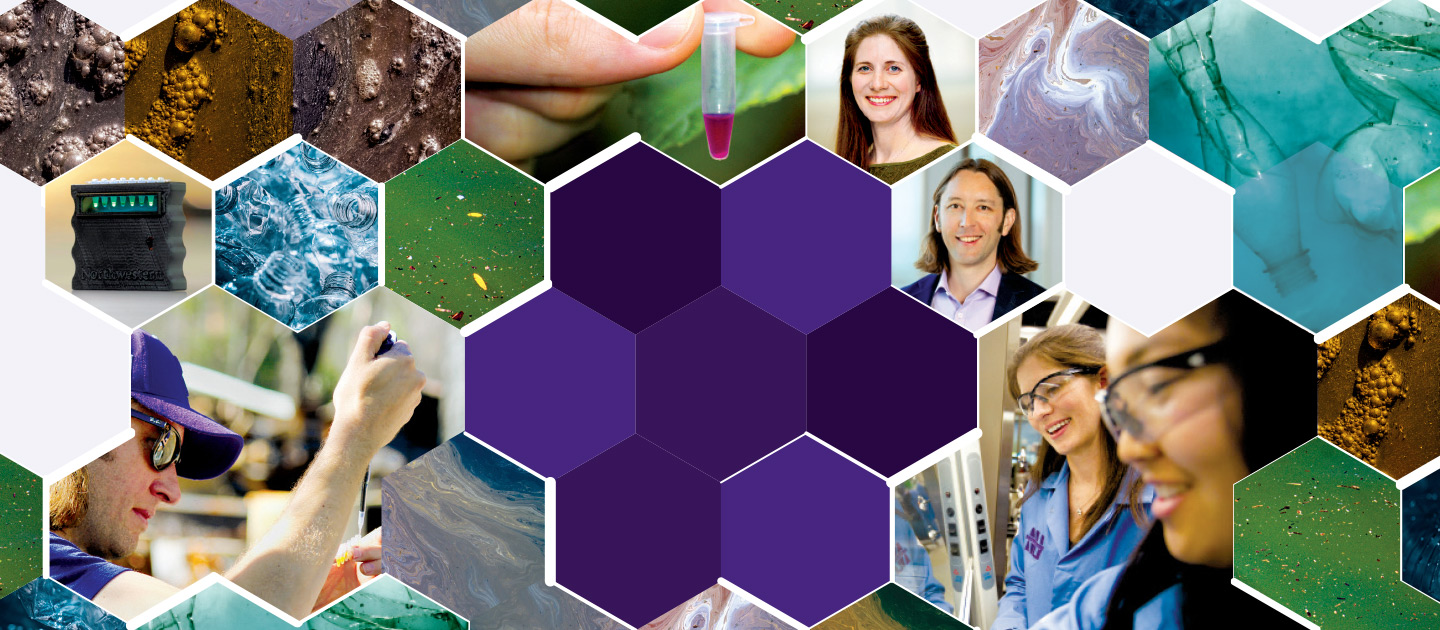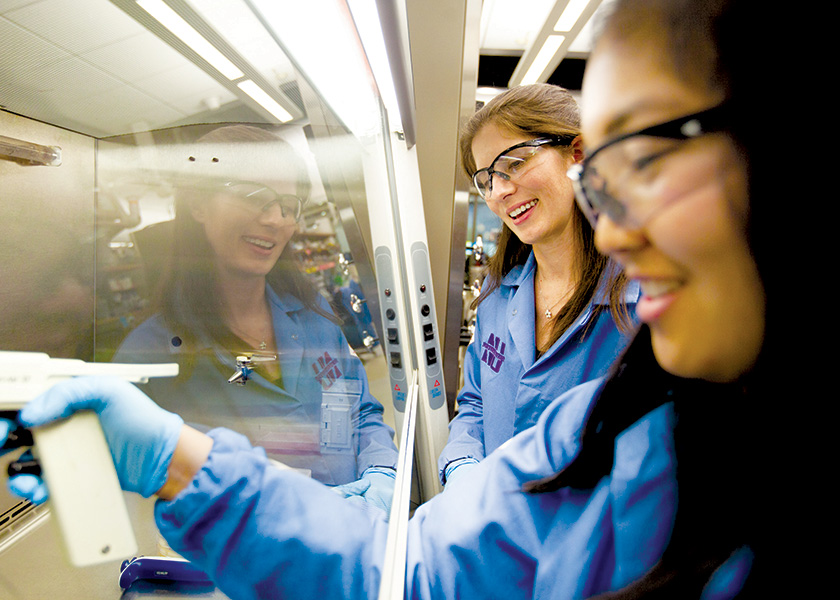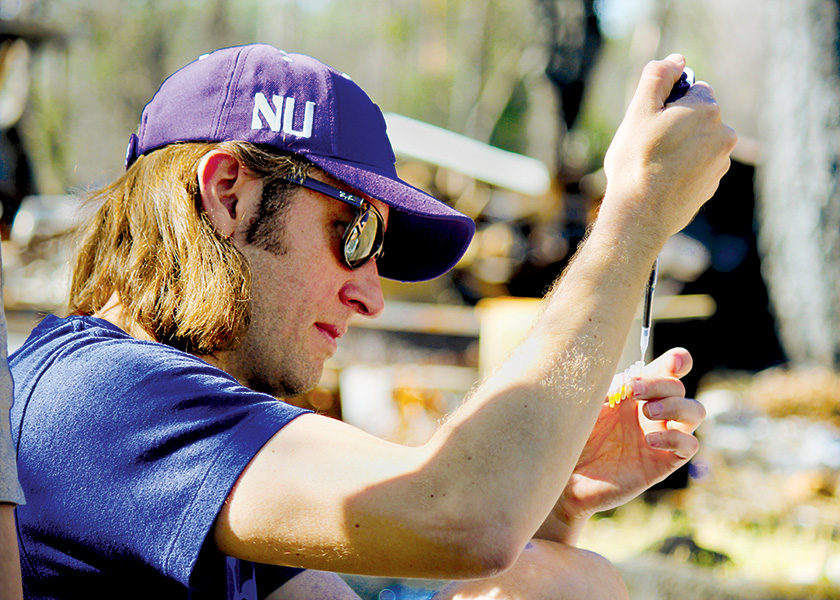To Save the Environment, Use Nature's Code
Engineers in the Center for Synthetic Biology reprogram cellular machinery to tackle big environmental problems.

Water is Earth’s most precious resource. It’s also the source of the planet’s most widespread challenges. More than 200,000 tons of plastic fill the oceans, while 2 billion people lack access to clean water.
At Northwestern Engineering, synthetic biologists see these crises as opportunities. Why not reprogram parts of cells to break down plastics? Or, how about sensing which contaminants have infiltrated a water source? Those are questions for which two Center for Synthetic Biology professors believe researchers in the field can find answers. They’re also optimistic the answers can come quickly and cheaply.
Breaking down plastics for re-use
Danielle Tullman-Ercek, associate professor of chemical and biological engineering, knows plastic water bottles, usually made out of polyethylene terephthalate (PET), won’t degrade within the user’s lifetime. Recycling them is one solution, but it’s expensive and results in a lower-quality plastic.

The real answer can be found in nature. Scientists have recently found a species of bacteria that can metabolize PET with a naturally occurring enzyme. Now, Tullman-Ercek is collaborating with Monica Olvera de la Cruz, Lawyer Taylor Professor of Materials Science and Engineering, Chemistry and (by courtesy) chemical and biological engineering, and physics and astronomy, and John Torkelson, Walter P. Murphy Professor of Chemical and Biological Engineering and Materials Science and Engineering, to engineer that enzyme to break down PET into its original chemical monomers in a cost-effective, scalable way. That way, existing plastic can be upcycled into a new product. The ultimate result would be a circular process for materials, with no new plastics created.
“Synthetic biology has enabled so many leaps, especially in the area of sustainability,” Tullman-Ercek says. “I think it’s possible to start upcycling plastics this way within the next five to 10 years.”
A simple platform for detecting contaminants
Julius Lucks also turned to nature to find a water contaminant sensor. Lucks, associate professor of chemical and biological engineering, used bacteria’s natural “taste buds” to create a simple, easy-to-use water contaminant testing platform called ROSALIND (RNA Output Sensors Activated by Ligand Induction).
When a drop of water is added to the reprogrammed taste buds, a chemical reaction causes them to glow green if a contaminant is present. The test was developed for 17 different contaminants, including lead, copper, pharmaceuticals, and cleaning products. The lab is already improving the technology to be more sensitive and detect other chemicals.

Lucks’s team is also taking a whole-brain engineering approach to the problem, working with social scientists to better understand how the results affect the users. “We want to know what people would do with this information,” Lucks says. “Will they be inspired to take action, or will they be paralyzed because they cannot do anything about it?”
Lucks also uses the same approach to detect coronavirus in sewage and disease in crops.
“We want these technologies to be available for everyone,” he says. “Hopefully, it will help people become more aware of environmental issues and change their decision-making to take better care of the Earth.”
